Idea by
PiM.studio Architects
Call for ideas 2020
Rewilding Architecture
Rewilding Architecture
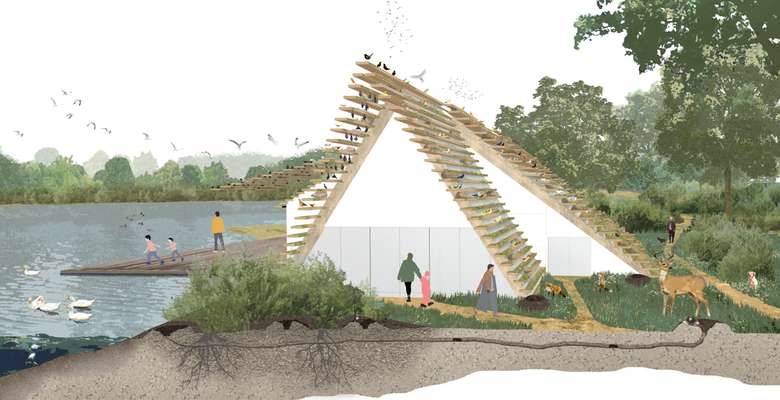
- Systemic changes
Architecture is a very anthropocentric discipline, mostly aimed at separating humans and nature by creating buildings and cities in which nature is either banned or strictly designed and controlled, and in the best cases included only as an ornamental feature for humans’ recreational purposes.
It is time to go beyond that! It is time to rewild architecture!
In this new series of drawings, we investigate the possibilities of a rewilded architecture by showing some of our latest projects in their ideally rich biodiverse environments, and we do so by representing mainly the nature present (or dreamed) in each project. The architecture becomes a background and nature is the real protagonist.
Creating a more biodiverse built environment and reintroducing a degree of wildlife in our buildings and our cities is possible at all scales and for all kinds of projects.
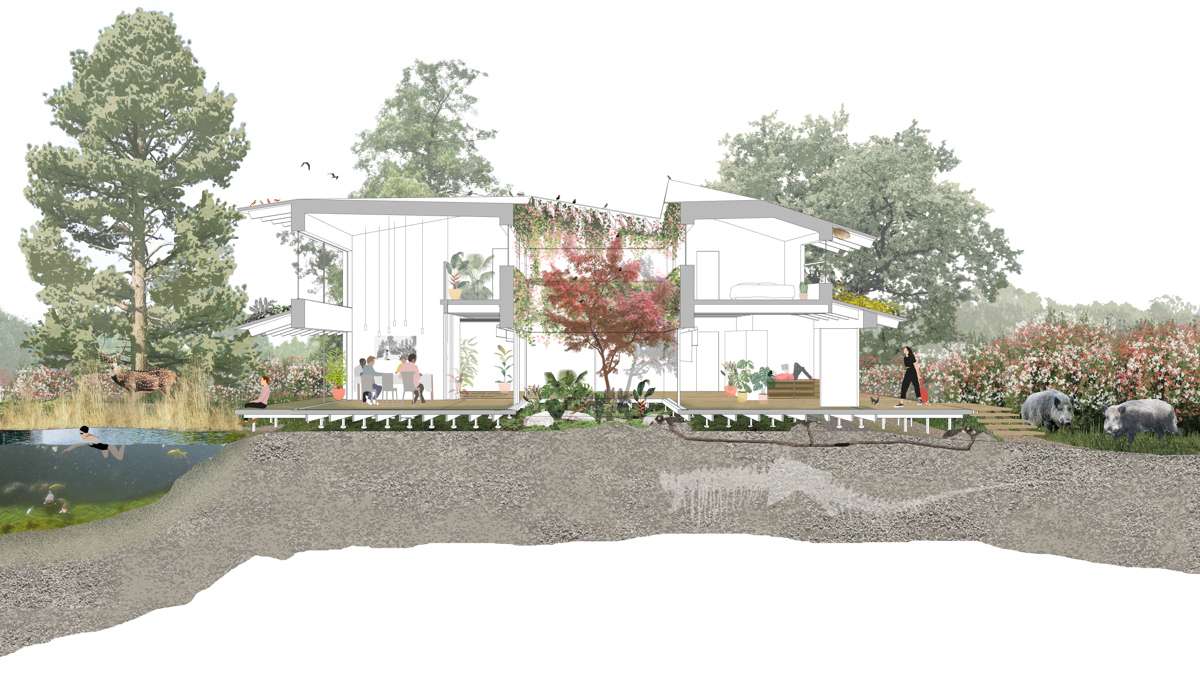
Patio House, in Geneva, is designed around a central open patio as a natural element generating the project.
From each room there is a view to the patio and to the garden so that each interior space faces, on two sides, natural spaces of different scales and characters; sightlines are therefore particularly important in this project.
The building is slightly raised off the ground, to create space underneath that will allow a free environment for small animals and invertebrates to move around.
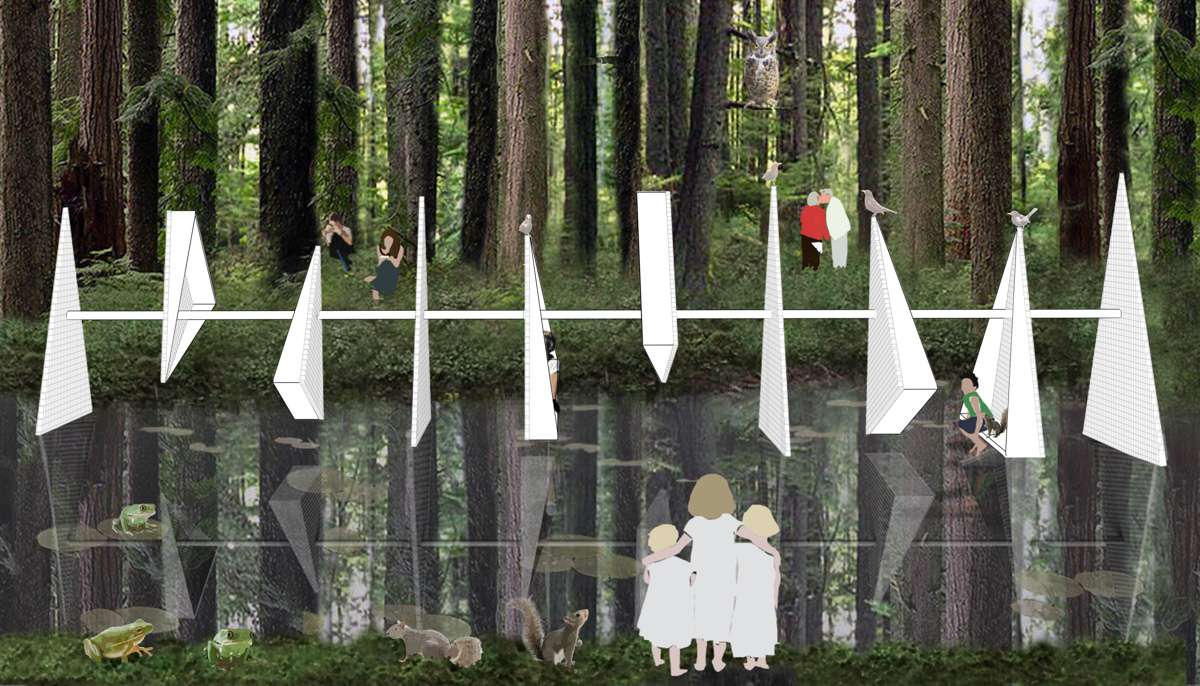
SPINNING CLIMATE CHANGE
A proposal for the International Garden Festival, Canada
Global sea level is projected to rise 1 to 4 feet by 2100.
A spinning carousel, partially Submerged by water, creates a powerful exhibition experience that provokes an enlightened action in relation to global warming realities.
The pond represents the rising sea level from now to 2100; the Spinning triangles inspire us to act as soon as possible, inviting people to act quickly in order to not get wet.
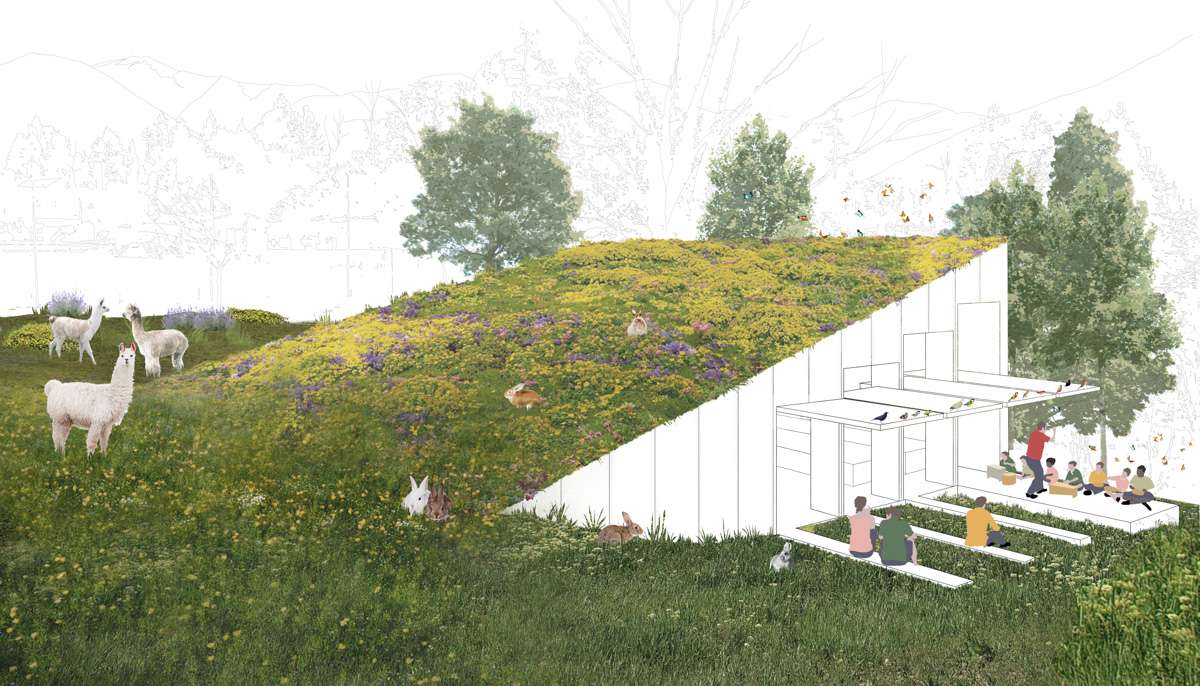
The new Valsolda Philharmonic hall has been designed in relation to hits natural context: the mountains surrounding the valley are protagonists. The new multi-purpose centre will host cultural, artistic and educational activities,
The new architecture is designed as a continuous element of the landscape, the green roof integrates the volume within the section of the hearth, and it will be a collection different species of plants typical of the site.
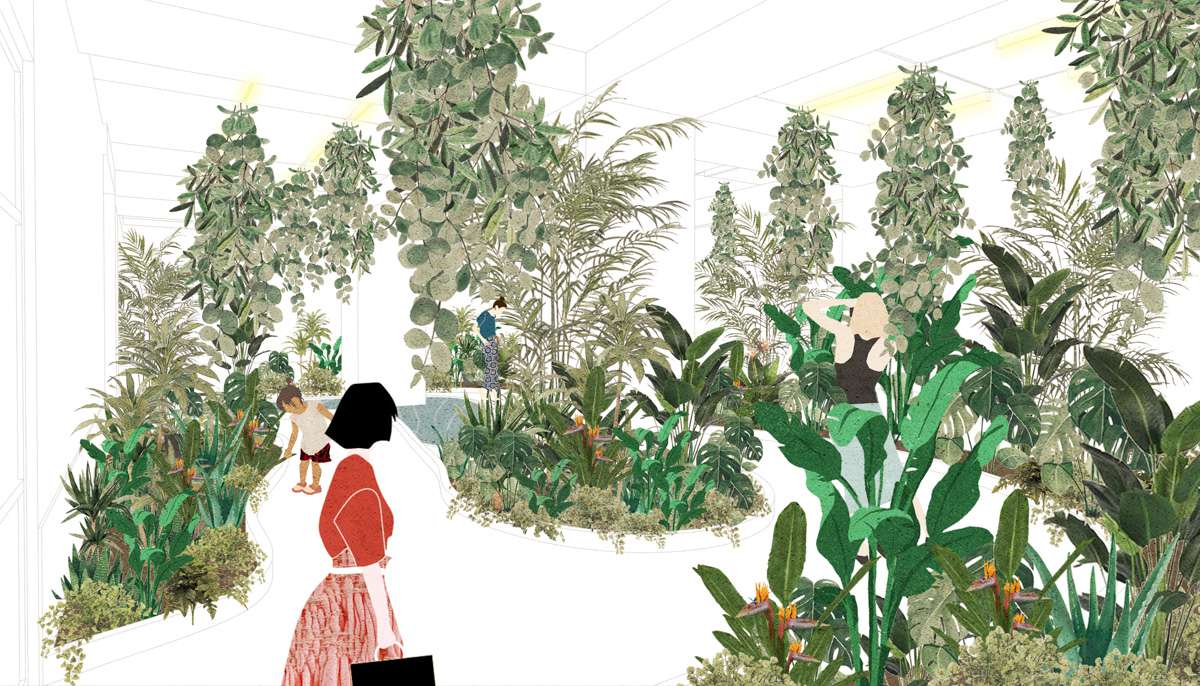
Rewilding RIBA
A zero-waste exhibition at the Royal Institute of British Architects
Our proposal is a place for nature. We need to be brave and act without hesitation to rewild our city!
We will transform the RIBA Architecture Gallery into a temporary garden, challenging the boundaries between city and nature, between inside and outside.
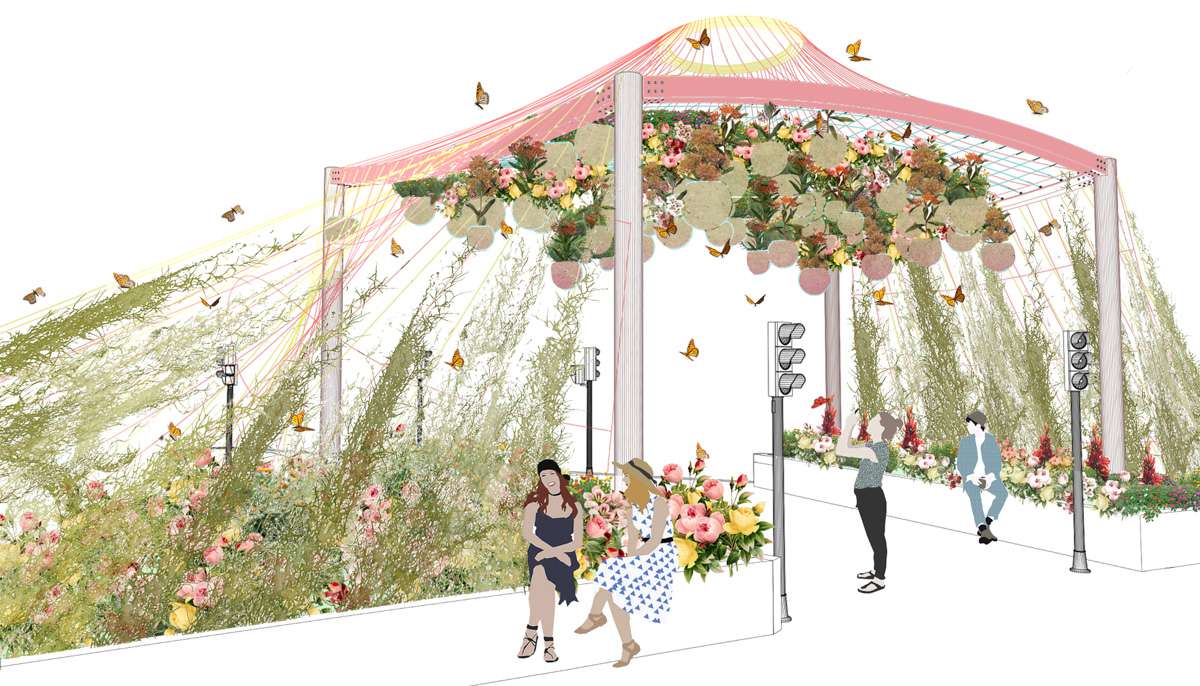
Where have all the butterflies gone?
Our proposal is a place for nature.
St. Paul’s hanging garden wants to encourage London’s wildlife and connect people to nature.
An environmental project that promotes a new elevated green space for the grow of butterflies.
The proposed garden is a combination of native plants and quick-growing annual flower to bring to the
centre of the City a sense of autochthonous nature while improving the air quality and biodiversity.
Rewilding Architecture
Rewilding Architecture

- Systemic changes
Architecture is a very anthropocentric discipline, mostly aimed at separating humans and nature by creating buildings and cities in which nature is either banned or strictly designed and controlled, and in the best cases included only as an ornamental feature for humans’ recreational purposes.
It is time to go beyond that! It is time to rewild architecture!
In this new series of drawings, we investigate the possibilities of a rewilded architecture by showing some of our latest projects in their ideally rich biodiverse environments, and we do so by representing mainly the nature present (or dreamed) in each project. The architecture becomes a background and nature is the real protagonist.
Creating a more biodiverse built environment and reintroducing a degree of wildlife in our buildings and our cities is possible at all scales and for all kinds of projects.
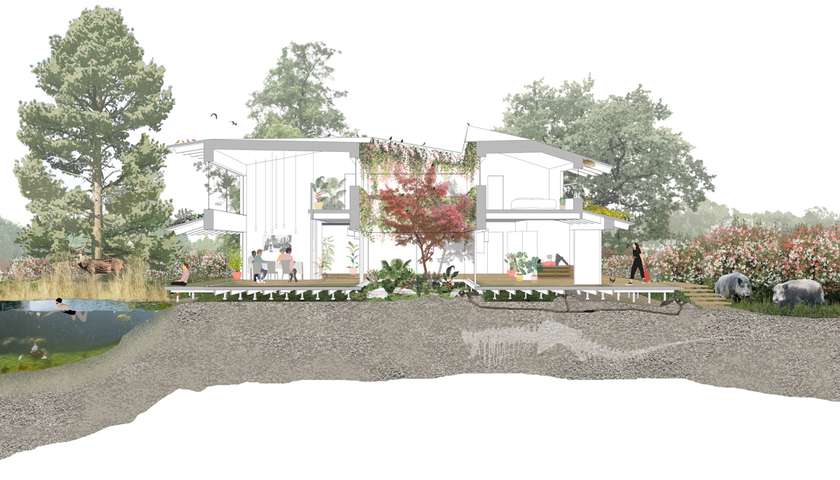
Patio House, in Geneva, is designed around a central open patio as a natural element generating the project.
From each room there is a view to the patio and to the garden so that each interior space faces, on two sides, natural spaces of different scales and characters; sightlines are therefore particularly important in this project.
The building is slightly raised off the ground, to create space underneath that will allow a free environment for small animals and invertebrates to move around.
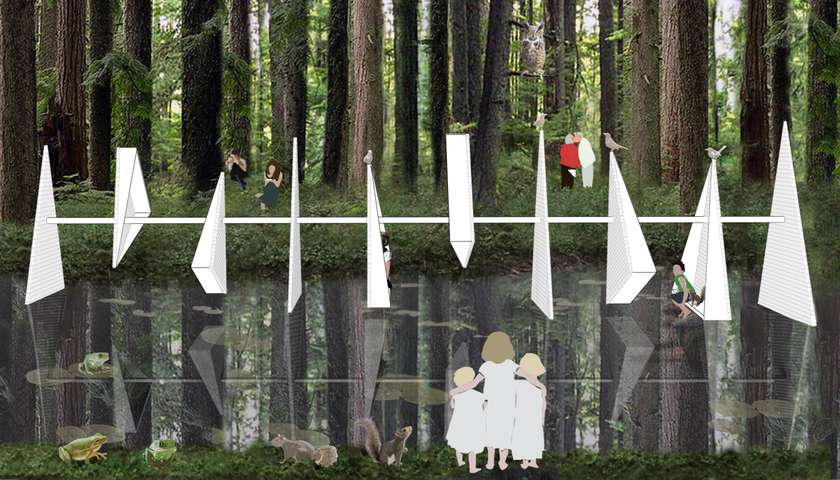
SPINNING CLIMATE CHANGE
A proposal for the International Garden Festival, Canada
Global sea level is projected to rise 1 to 4 feet by 2100.
A spinning carousel, partially Submerged by water, creates a powerful exhibition experience that provokes an enlightened action in relation to global warming realities.
The pond represents the rising sea level from now to 2100; the Spinning triangles inspire us to act as soon as possible, inviting people to act quickly in order to not get wet.
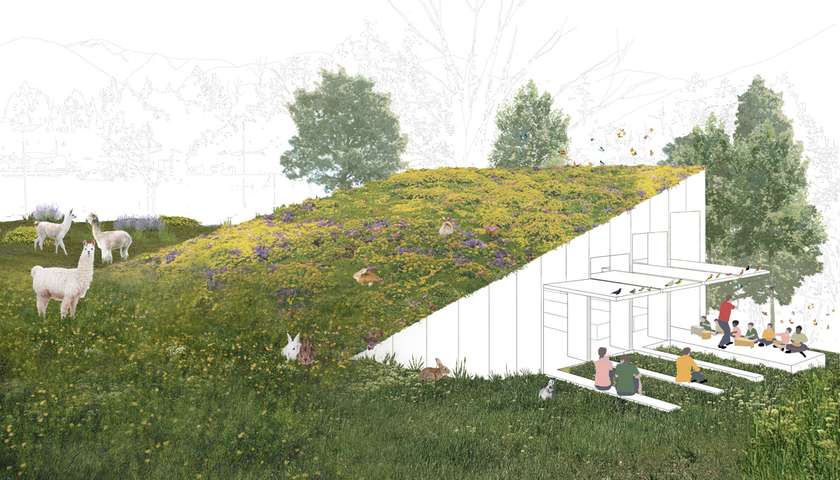
The new Valsolda Philharmonic hall has been designed in relation to hits natural context: the mountains surrounding the valley are protagonists. The new multi-purpose centre will host cultural, artistic and educational activities,
The new architecture is designed as a continuous element of the landscape, the green roof integrates the volume within the section of the hearth, and it will be a collection different species of plants typical of the site.
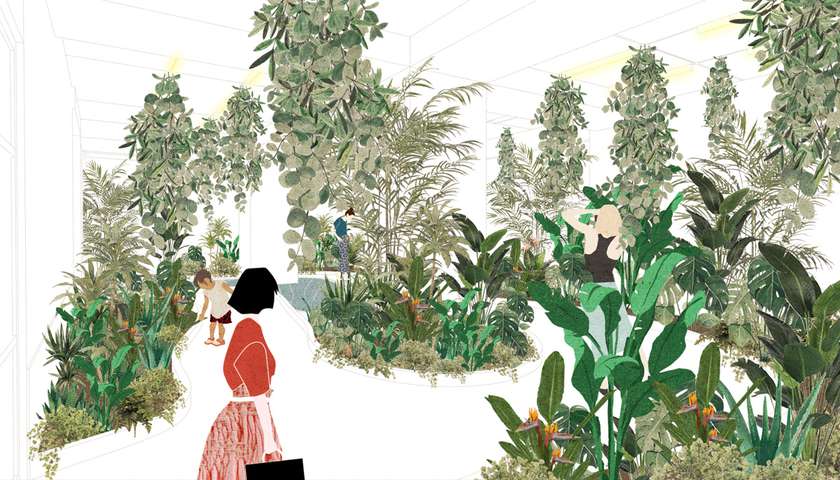
Rewilding RIBA
A zero-waste exhibition at the Royal Institute of British Architects
Our proposal is a place for nature. We need to be brave and act without hesitation to rewild our city!
We will transform the RIBA Architecture Gallery into a temporary garden, challenging the boundaries between city and nature, between inside and outside.
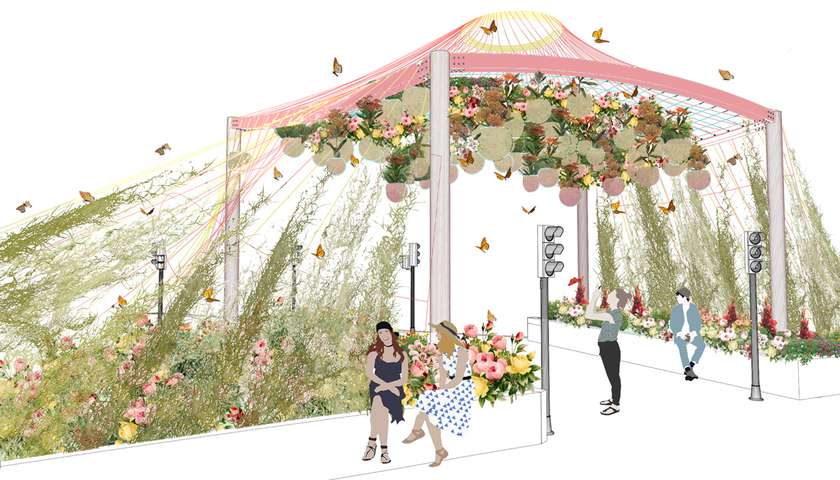
Where have all the butterflies gone?
Our proposal is a place for nature.
St. Paul’s hanging garden wants to encourage London’s wildlife and connect people to nature.
An environmental project that promotes a new elevated green space for the grow of butterflies.
The proposed garden is a combination of native plants and quick-growing annual flower to bring to the
centre of the City a sense of autochthonous nature while improving the air quality and biodiversity.